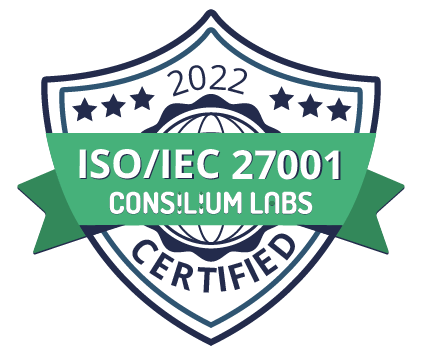Strategic planning is the backbone of any successful organization. But in today’s fast-paced business environment, relying solely on intuition or lengthy manual processes can slow down progress and lead to costly mistakes. That’s where decision-making software comes in — helping organizations make faster, smarter, and more aligned strategic decisions.
At Expert Choice, our solutions Comparion® and Riskion® empower leaders to evaluate complex options, mitigate risks, and drive actionable outcomes with confidence.
What is Strategic Planning?
Strategic planning is the process of defining an organization’s direction, setting priorities, and allocating resources to achieve long-term goals. It requires analyzing data, assessing risks, and balancing competing priorities.
Yet many organizations struggle with:
-
Delays in decision-making due to manual evaluation processes.
-
Difficulty in aligning diverse stakeholders’ perspectives.
-
Challenges in evaluating multiple alternatives with conflicting criteria.
This is where decision-making software can revolutionize the process.
3 Types of Strategic Planning Analyses
There is no universal template for strategic planning, but organizations—and even teams or projects within the same organization make better decisions by knowing when and how to conduct three primary types of decision analysis:
1. Goal‑Based Strategic Planning (Objective-Driven-Choice-Decisions)
Goal-based strategic planning begins with an organization’s mission and vision, translating them into long-term goals, measurable objectives, and actionable initiatives. It’s a structured, forward-looking approach that works best when there’s a clear direction and stable environment.
How Comparion® helps:
- Use hierarchies of criteria and alternatives to evaluate which initiatives best advance strategic goals.
- Conduct what-if and sensitivity analyses to test how changes in assumptions or resource levels affect outcomes.
- Facilitate stakeholder alignment by aggregating judgments and surfacing consensus or divergence.
Goal-based planning defines where you want to go; Comparion® helps you decide how to allocate effort and investment toward the right goals.
- Use Comparion® to rank and compare strategic alternatives across multiple scenarios, applying consistent criteria even when assumptions shift.
- Leverage Comparion®’s scenario analysis and sensitivity features to expose where small changes in inputs lead to big swings in priorities.
2. Issue-Based Strategic Planning (Strategic of Existing Operations)
Issue-based planning focuses on identifying and addressing the most pressing challenges facing the organization — whether they’re operational bottlenecks, regulatory pressures, financial concerns, or competitive threats. Instead of starting with a long-term vision, it starts with the reality of immediate problems and develops strategy around solving them.
How Riskion® helps:
- Identify and structure risks associated with core organizational challenges, evaluating both causes and effects.
- Quantify likelihood and impact across identified risks, turning vague problem areas into prioritized, actionable items.
- Optimize risk responses or mitigation controls to get the best “bang for the buck” across the portfolio of issues.
- Integrate risk-adjusted thinking early: map how proposed initiatives might exacerbate or alleviate risks.
- Simultaneously, apply Riskion® to embed risk constraints from past decisions — e.g. “Which past choices may limit flexibility?” or “What legacy risks carry forward?”
- Evaluate trade-offs between pursuit (reward) and risk under each scenario. Riskion® provides mathematically valid measures for potential threats, enabling comparisons across scenario portfolios.
3. Scenario‑Based Strategic Planning - Optimizations and Simulations
Scenario-based planning is built around exploring multiple possible futures — from market disruptions and technological advances to regulatory changes or economic shifts. It emphasizes adaptability and resilience, allowing organizations to craft strategies that can withstand uncertainty and evolve as conditions change. This approach permits consideration any constraints and risks carried forward from past decisions, such as resource limitations, sunk costs, or strategic commitments.
Comparion® + Riskion® have embedded optimization and simulation tools that permit scenario planning.
- Compare how the decision would be impacted at various budget levels.
- Visualize multi-period calendar implementations at different budget levels.
- See the impact of any type of constraints you define (human resources, project dependencies, funding pools, compliance requirements, and much more.)
- If a scenario reveals that certain strategic paths become untenable under new constraints or risks, the combination of Comparion® + Riskion® helps refine or discard those paths early.
How Decision-Making Software Helps
Whether you current project is focused on a goal-based, issue-based, or scenario-based need, one challenge remains the same: making well-informed, timely, and transparent decisions. Traditional planning often relies on manual processes, spreadsheets, or unstructured discussions — which can lead to delays, bias, and misalignment.
This is where decision-making software plays a critical role.
By using platforms like Comparion® and Riskion®, organizations can:
-
Structure Complex Decisions – Break down large goals, issues, or scenarios into measurable criteria and alternatives.
-
Align Stakeholders – Gather input from diverse teams and ensure every perspective is factored into the decision-making process.
-
Prioritize with Clarity – Use advanced methods (like the Analytic Hierarchy Process) to rank initiatives and allocate resources where they matter most.
-
Manage Risks Proactively – Assess uncertainty and potential obstacles early, so strategies remain resilient under changing conditions.
-
Accelerate Execution – Streamline discussions, reduce analysis paralysis, and move from planning to action faster.
In short, decision-making software doesn’t replace strategic planning — it empowers it by adding transparency, collaboration, and rigor at every stage.
Comparion®: Driving Strategic Planning with Alignment and Clarity
When it comes to strategic planning, organizations often struggle to balance competing priorities, limited resources, and differing stakeholder perspectives. Comparion® addresses these challenges head-on by providing a collaborative decision-making environment built on the Analytic Hierarchy Process (AHP).

How Comparion® Accelerates Strategic Planning:
-
Prioritize Strategic Initiatives: Break down high-level goals into clear criteria and rank initiatives based on impact, feasibility, and alignment.
-
Align Stakeholders Quickly: Tools like TeamTime and Virtual Whiteboard bring decision-makers together — whether in-person or remote — to build consensus without lengthy debates.
-
Optimize Resource Allocation: With Resource Aligner, organizations can model multiple allocation scenarios to maximize strategic impact with available budgets and staff.
-
Test Strategic Scenarios: Use sensitivity and scenario analysis to understand trade-offs and adjust strategies before finalizing plans.
By embedding Comparion® into the planning process, leaders move from slow, fragmented discussions to fast, transparent, and evidence-based decision-making — accelerating the entire strategic planning cycle.
Riskion®: Building Risk-Adjusted Strategic Plans
No strategic plan is complete without accounting for risk. Overlooking risks can derail even the most carefully prioritized initiatives. Riskion® ensures that strategic plans are not only ambitious but also resilient to uncertainty.

How Riskion® Strengthens Strategic Planning:
-
Identify Risks Early: Capture organizational, financial, and operational risks tied to strategic objectives.
-
Quantify Risk Impact: Evaluate the likelihood and severity of risks so leaders can make informed trade-offs.
-
Prioritize Risk Responses: Focus resources on the risks most likely to threaten strategic outcomes.
-
Integrate Risk with Planning: When used alongside Comparion®, Riskion® ensures that chosen strategies are both impactful and risk-adjusted.
With Riskion®, strategic plans transform into actionable roadmaps that balance opportunities with safeguards, enabling leaders to pursue growth with confidence..
Frequently Asked Questions (FAQs)
1. Who can benefit from decision-making software?
Decision-makers such as C-suite executives, project managers, strategic planners, and risk managers can benefit from structured decision-making tools.
2. Can small or medium-sized organizations benefit from decision-making software?
Yes. Even smaller organizations can use decision-making tools to clarify priorities, optimize resource use, and make informed strategic decisions efficiently.
3. What are the benefits of using structured decision-making in strategic planning?
Benefits include faster decision cycles, better prioritization, enhanced stakeholder alignment, data-driven insights, and reduced risk of costly errors.
4. How does risk management fit into strategic planning?
By identifying and assessing potential risks, organizations can adjust plans, prioritize actions, and ensure strategies remain resilient under uncertainty.
5. How is AI transforming strategic planning?
AI can analyze large datasets, predict outcomes, identify patterns, and provide actionable insights. Integrating AI with decision-making software allows organizations to accelerate planning, evaluate scenarios faster, and make smarter, risk-aware decisions.
Conclusion
In a world where speed, accuracy, and alignment are crucial for organizational success, relying on intuition or manual processes is no longer enough. Comparion® and Riskion® empower leaders to make faster, smarter, and risk-aware decisions, transforming strategic planning into a high-impact, outcome-focused process.
By integrating these tools into your workflow, you can prioritize initiatives effectively, build stakeholder consensus, and mitigate risks before they impact your business. The result? Accelerated decision-making, optimized resource allocation, and a clear path to achieving strategic goals.
Take the next step — explore how Expert Choice’s solutions can revolutionize your organization’s strategic planning. Request a demo today and experience the power of structured, data-driven decision-making.











